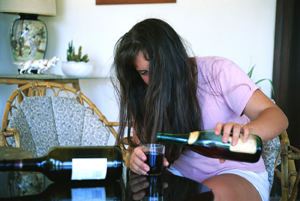Alcoholism: Myths and Facts
Myth: But she’s not always drunk.
Fact: Very few alcoholics are. It’s what happens when they drink that counts.
Myth: But he has such a nice family.
Fact: There is no reason an alcoholic can’t have a nice family. Most alcoholics are able to take care of their families for a long time.
Myth: But she doesn’t look like an alcoholic.
Fact: There is no “alcoholic look.” In fact, many alcoholics make a point of looking especially good just to “prove” they aren’t alcoholics.
Myth: But he only drinks beer.
Fact: Alcohol is alcohol. A can of beer equals a shot of whiskey equals a glass of table wine.
Myth: He makes it to work every day, so he couldn’t be an alcoholic.
Fact: Many alcoholics rarely miss work. They may be hung over, but still manage to show up.
Myth: But he comes from such a good background.
Fact: Alcoholism can happen to anyone, regardless of family background or social and economic status.
Myth: But he has a good job.
Fact: Most alcoholics are employed, responsible people. Many are professionals and executives.
Myth: She’s too nice to be an alcoholic.
Fact: Many alcoholics are good people. There is no “alcoholic personality,” although a person’s behavior can change after drinking.
Myth: But I never see her drink.
Fact: Alcoholics often keep their drinking habits secret, especially from coworkers and employers.
Myth: Alcoholics are all bums.
Fact: Most alcoholics are ordinary, respectable people.
Alcoholism: Myths and Facts
Most of us believe things about alcoholism that aren’t really true. These myths cloud our thinking about alcoholics and keep us from acknowledging alcoholism when it shows up in our families, friends, or workplaces. But by cutting through the myths and learning the facts, we can assure that these false ideas won’t prevent us from recognizing alcoholism and doing something about it.
Updated:
March 21, 2017
Sources:
Risky drinking and alcohol use disorder: Epidemiology, pathogenesis, clinical manifestations, course, assessment, and diagnosis. UpToDate
Reviewed By:
Ballas, Paul, DO,Nelson, Gail A., MS, APRN, BC
